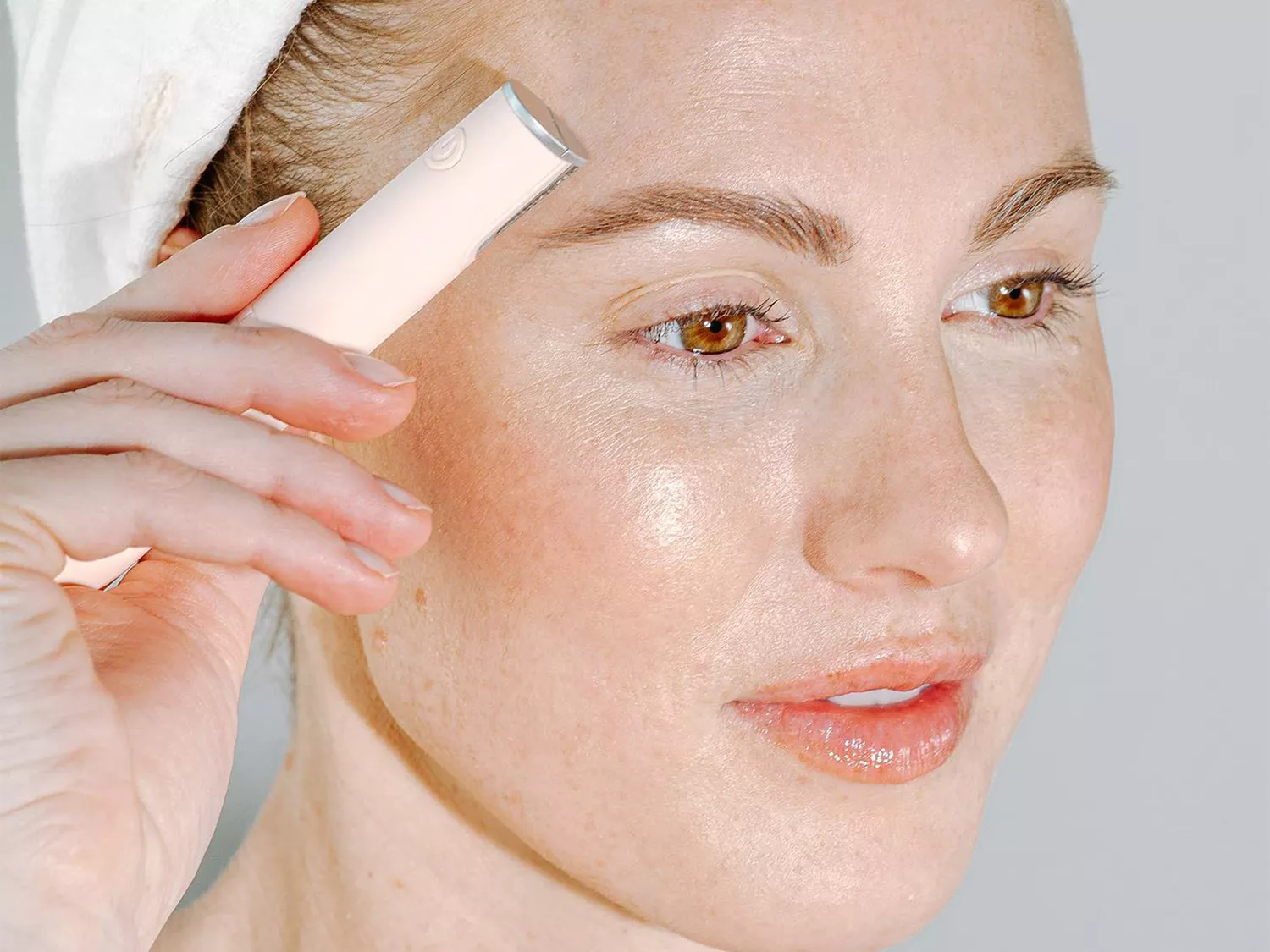
@dermaflash / Instagram
Dermaplaning, or shaving your face, is all the rage on social media, but aside from zapping some unwanted peach fuzz, what does it really do? In order to get the scoop on this viral treatment and how to try it at home, we chatted with two dermatologists and an esthetician. Ahead, discover how to safely dermaplane at home, step-by-step.
What Is Dermaplaning?
Dermaplaning is a skincare treatment that involves using a small exfoliating scalpel to remove the topmost layer of skin, which typically harbors dirt, oil, dead skin cells, and peach fuzz. "Most people are dermaplaning candidates," notes Kunin. "If you have sensitive skin, acne, active eczema, or other rashes, dermaplaning is not advised." That said, dermaplaning is an effective way to both remove facial hair and exfoliate—think of it as a buzzier term for shaving your face. As such, it can be done in a salon by an esthetician or at home.
Dr. Brendan Camp, a board-certified dermatologist of MDCS Dermatology , notes that despite the similarities, dermaplaning is different than just shaving. "The intent is to improve the appearance of skin," he says, "as opposed to the removal of hair." The tools also differ. "Dermaplaning is similar to shaving, however the tool is better suited to exfoliate the epidermis than a razor," says Kunin.
How to Dermaplane at Home
For tools, youll want to use an actual dermaplaning razor (rather than the traditional razor youd use to shave other parts of your body), and its important to use a clean blade each time you dermaplane. A dermplaning razor should feature a long, ergonomic handle (about the length of a pen) and a tapered razor edge. You can use a drugstore option (we love the ones by Venus) or something more powerful like the electric Dermaflash. Both function well in terms of hair removal and exfoliation, so its all a bout your personal preference.

@dermaflash / Instagram
Start with clean, dry skin:Its important to make sure you skin is very clean to avoid the spread of bacteria on the face and contamination of your tool. As this is an exfolating treatment, youll want to avoid active ingredients for at least 2-3 days before dermaplaning (as well as 2-3 days after). Youll also want to avoid dermaplaning any areas with active breakouts.Pull the skin taut:Working in small sections (about the width of the razor on your dermaplaning tool), pull the skin upwards until its taut.Dermaplane in downward, feathery strokes: Its very important to use light, feathering motions with your dermaplaning tool—do not drag the tool across the skin or use any pressure. Always move downwards in short strokes with the razor at a 45-degree angle against the skin. Start with a small patch test along the jawline to make sure your skin isnt too sensitive for dermaplaning. (A little bit of redness is normal, but if you develop a rash, feel pain, or skin becomes irritated, stop the process right away.)Start at the ear and work your way down:Starting at the top of the ear, make small strokes downward, moving down to the jawline and in towards the nose to get the whole cheek, jawline, chin, and upper lip.Repeat: Then, move to the sides of the face by the eyes, followed by the forehead, using downward strokes. Avoid the hairline, eyelides, and sides of nose—and work very cautiously around eyebrows to avoid unwanted hair removal.Optionally dermaplane the neck: Lastly, stroke the neck downward from the jawline. However, keep in mind that for most people, the skin on your neck is much more sensitive than the skin on your face.
Benjamin cautions that very little pressure is needed—after all, you’re just exfoliating the dead outer layer of skin and removing the fine hairs.
Is Dermaplaning at Home Safe?
Unlike other exfoliating treatments like lasers and peels, dermaplaning is safe for all skin types according to Dr. Camp "It is also a good option for pregnant women or people with sensitive skin who are not able to use certain products," he says.
Most people are able to dermaplane at home without issue, but nicks and cuts do happen. Dr. Camp says you can reduce this risk by using a brand new, clean blade each time you dermaplane. That said, anytime you nick the skin, minor skin infections and irritation are possible. "If redness, discomfort, pustules, or golden crusting are seen, it is time to call a dermatologist," says Kunin.
And no, dermaplaning your peach fuzz will not cause you to regrow thicker, coarser hair. Both experts are adamant about the fact your hair won’t grow back thicker. “While I understand that this sounds controversial, shaving your hair does not make it grow back thicker or darker,” Benjamin says.“You aren’t changing the structure of the follicle.” She says that your actual hair follicle sits deep under the skin—when you shave, you’re cutting the hair off at the base, which might be thicker than the ends. You aren’t messing with the follicle itself, which means your hair will grow at the same rate, width, and texture as before. Kunin agrees, adding, "It is a myth that shaving causes hair to grow back thicker and darker, so as with shaving, dermaplaning does not cause a textural change to hair regrowth."
Aftercare
So your face is (lightly) shaved and soft as a baby’s bottom, but your work isn’t done quite yet. “After dermaplaning, immediately follow up with a hydrating serum or any other serum you use in your normal skincare regimen,” Benjamin says.
To lock in the serum, Kunin recommends applying a moisturizer. This has the added benefit of providing much-needed hydration to freshly-exfoliated skin. Benjamin and Kunin agree that SPF should be applied as a post-care step. Benjamin recommends choosing an SPF of at least 30.
Active ingredients such as acne treatments, peels, and exfoliants should be avoided for 2-3 days following dermaplaning.
I Shaved My Face With an Eyebrow Blade—Heres What Happened